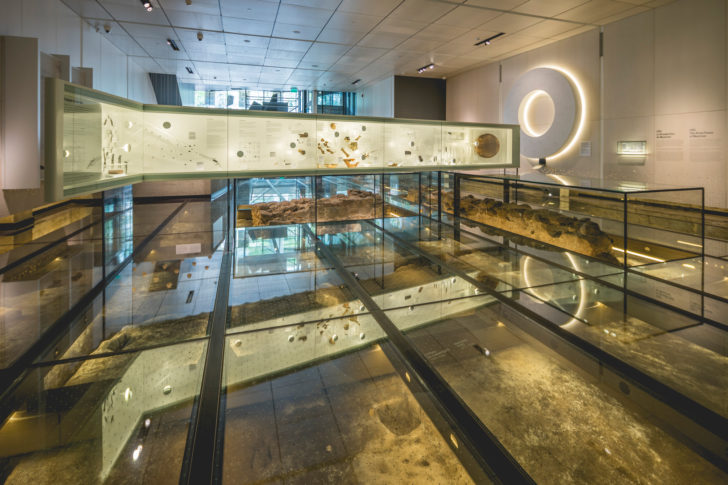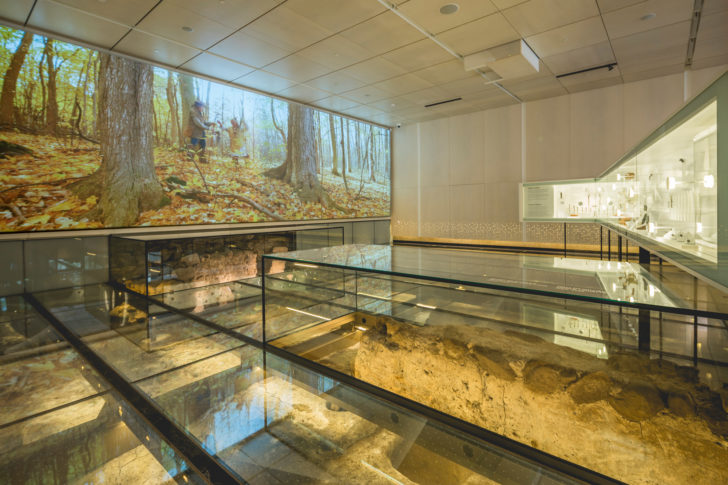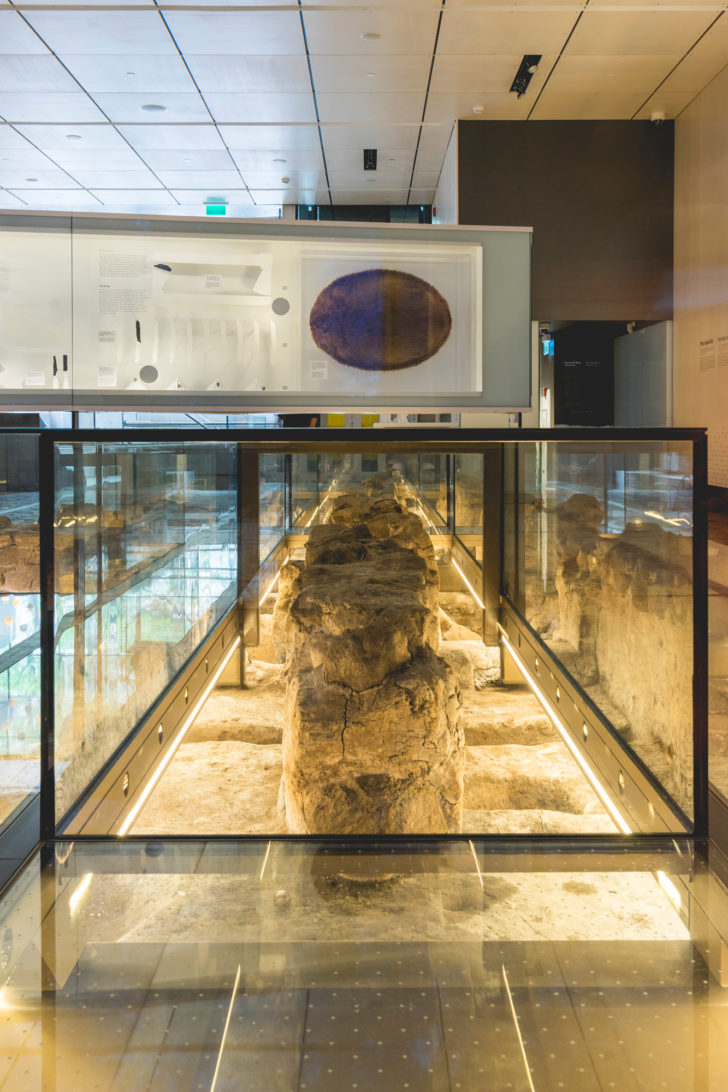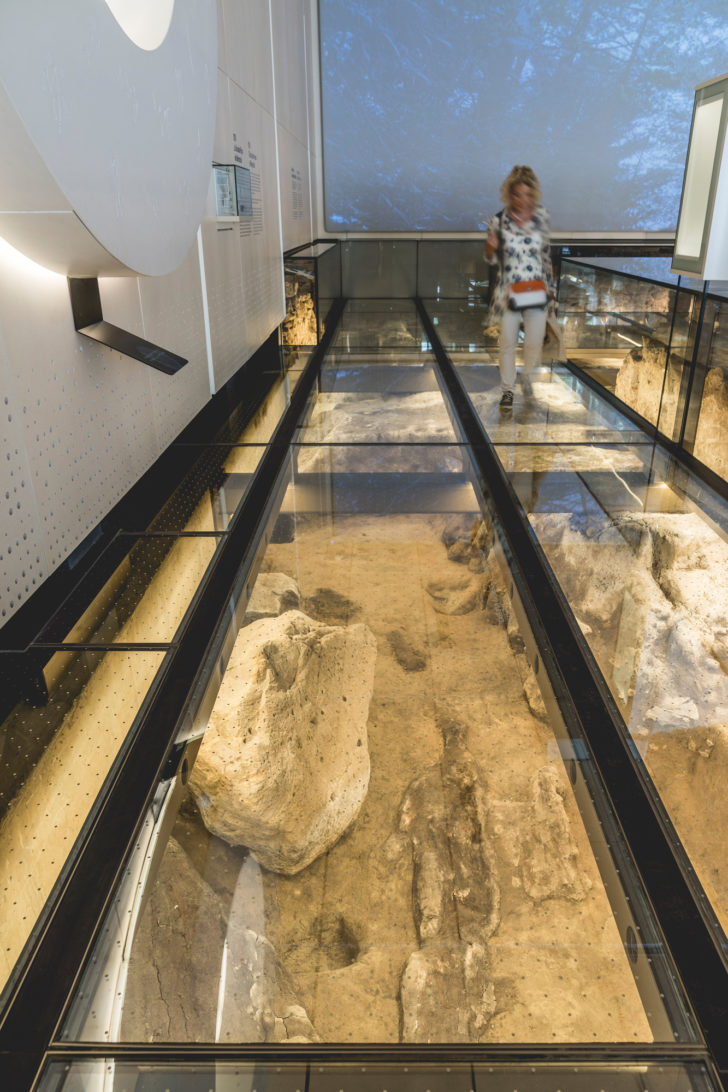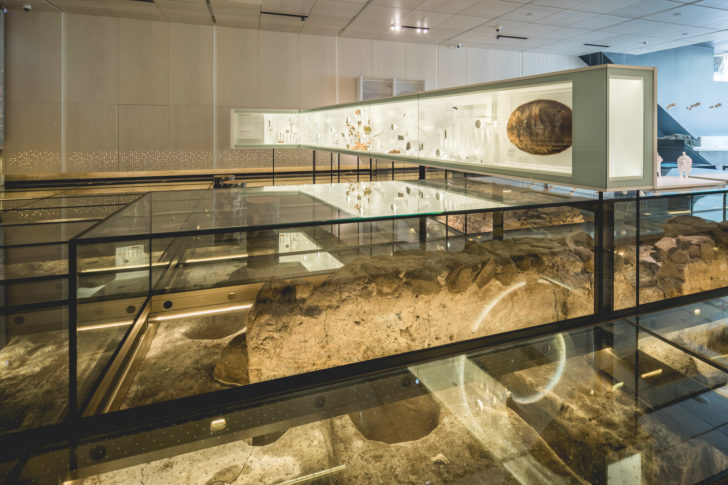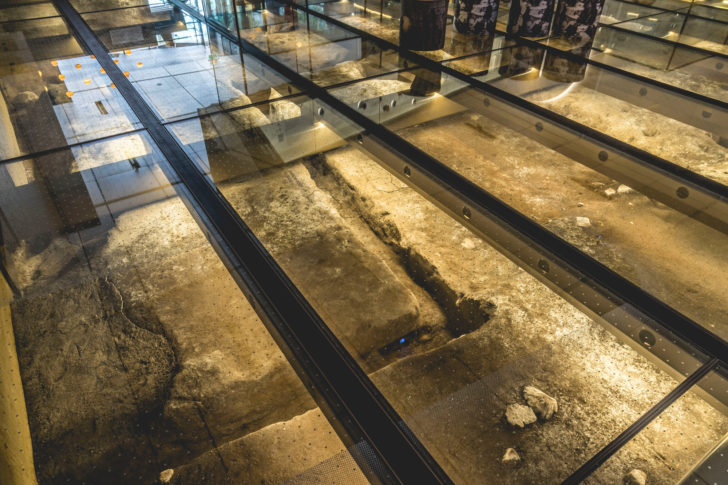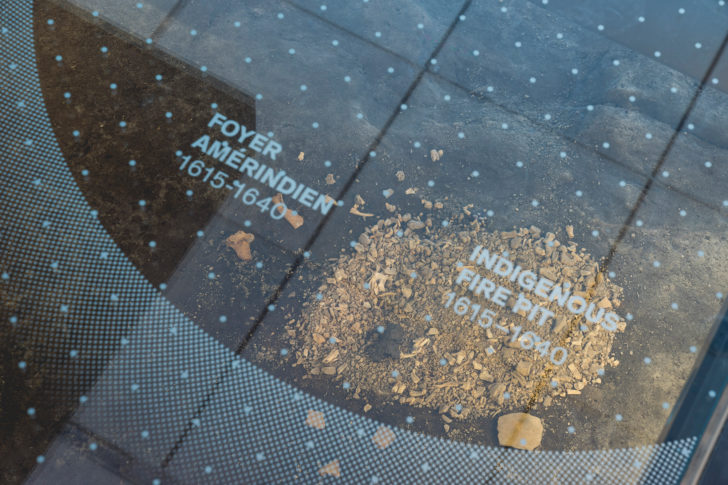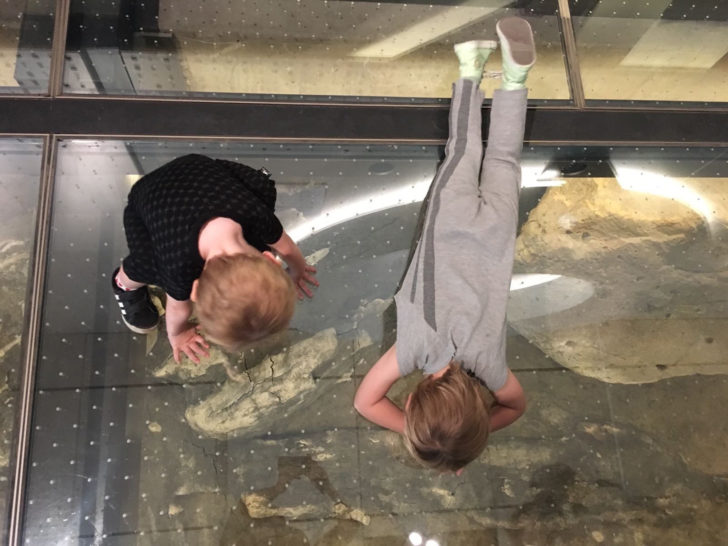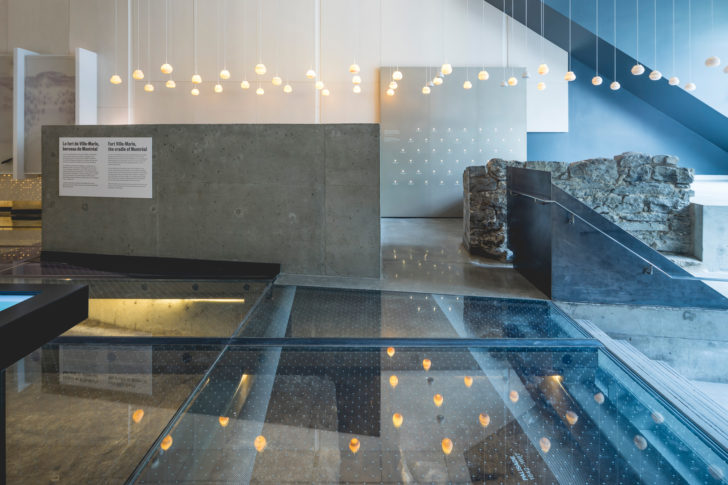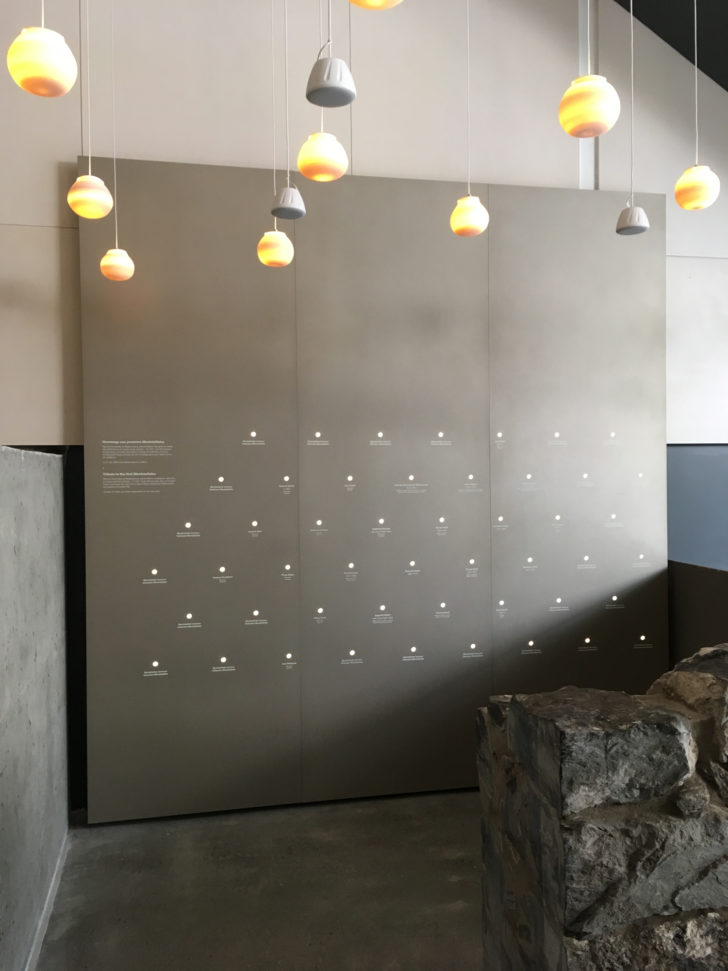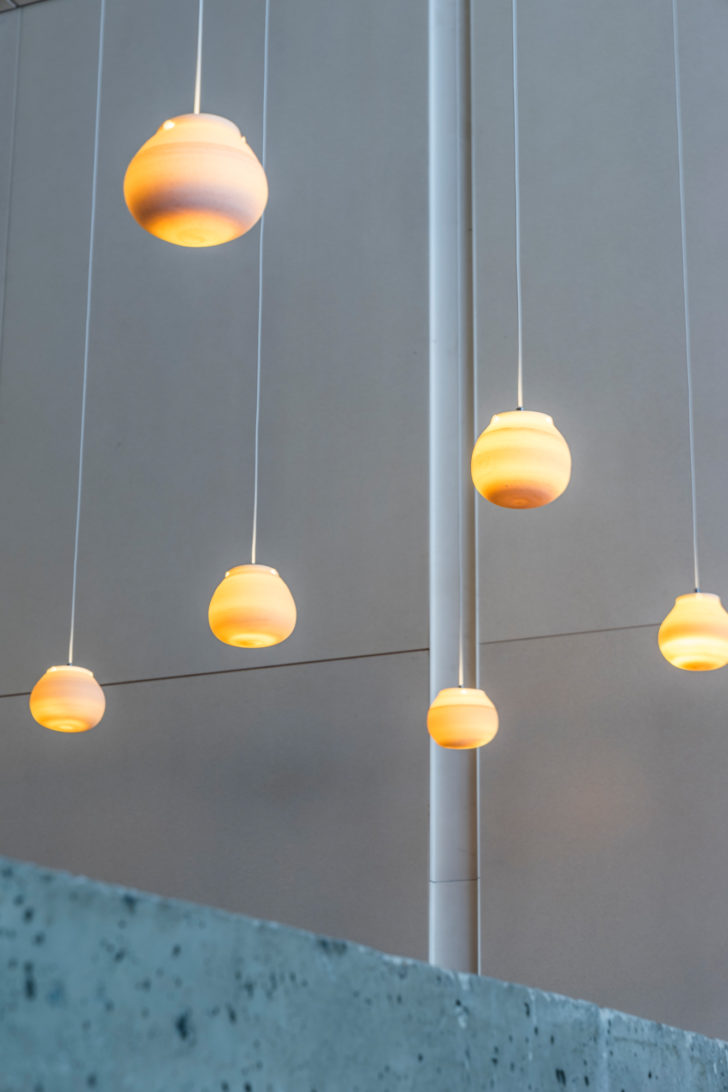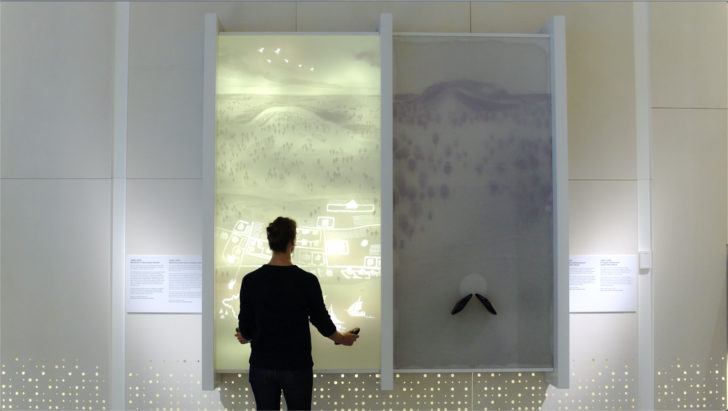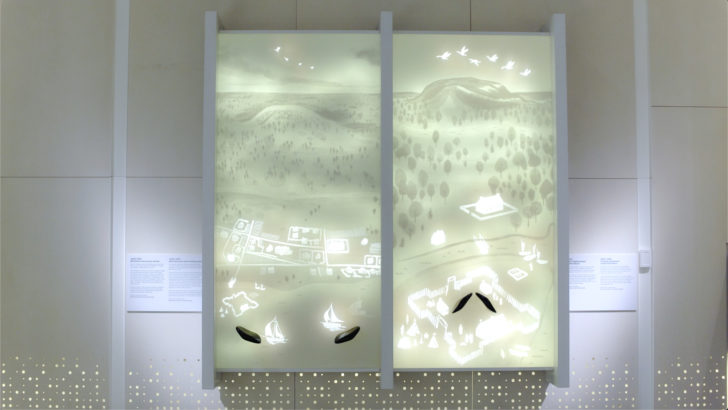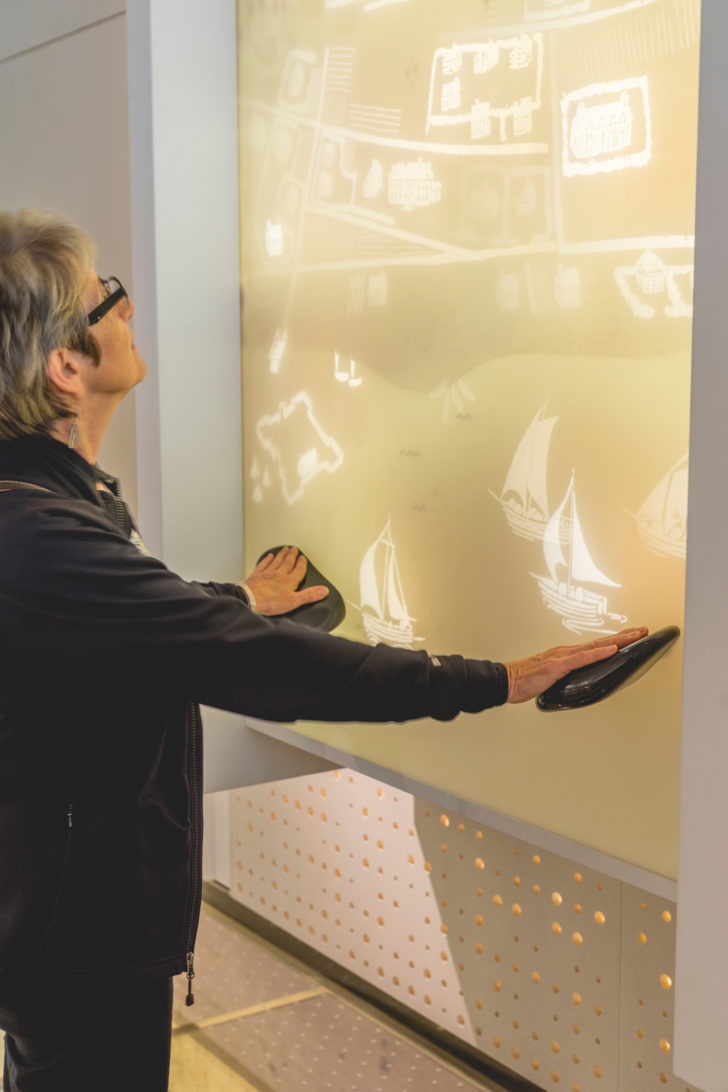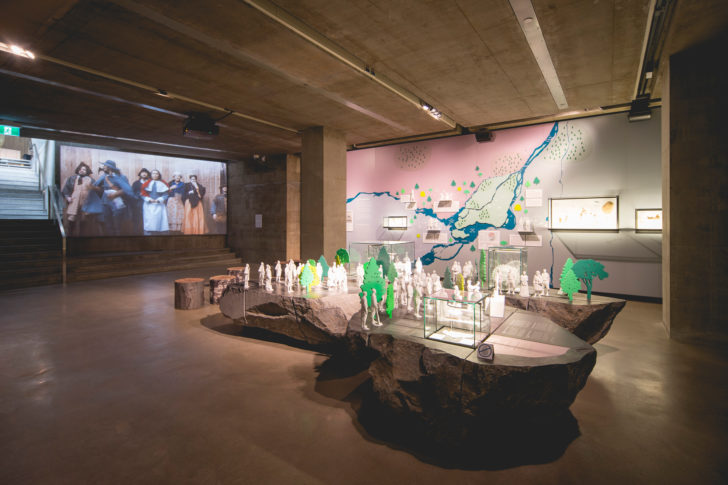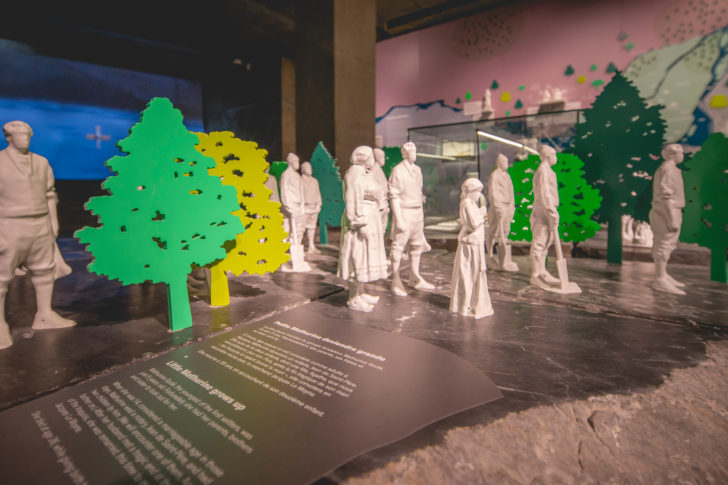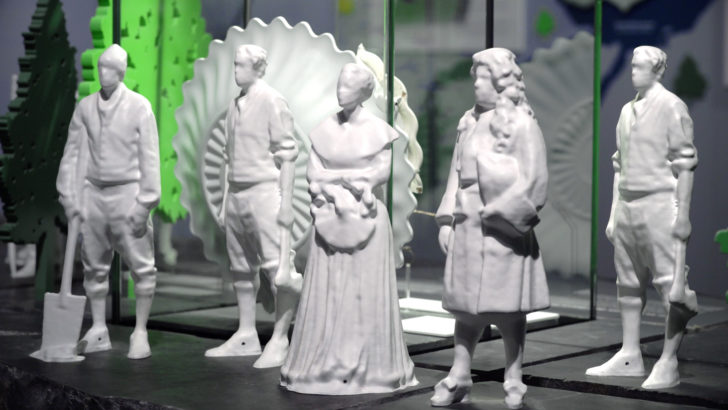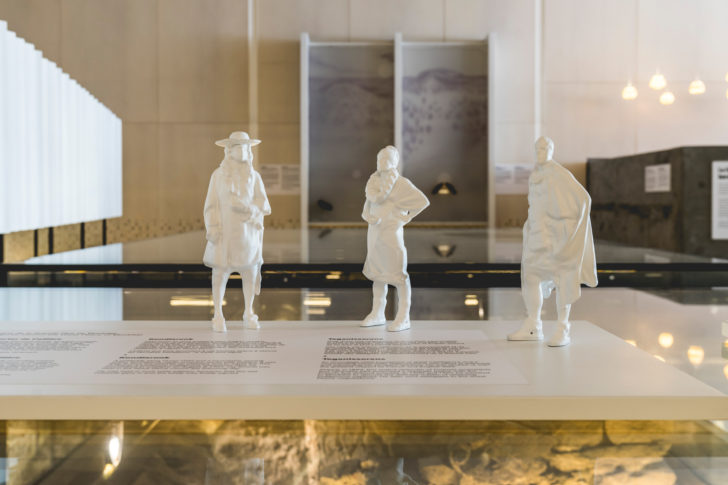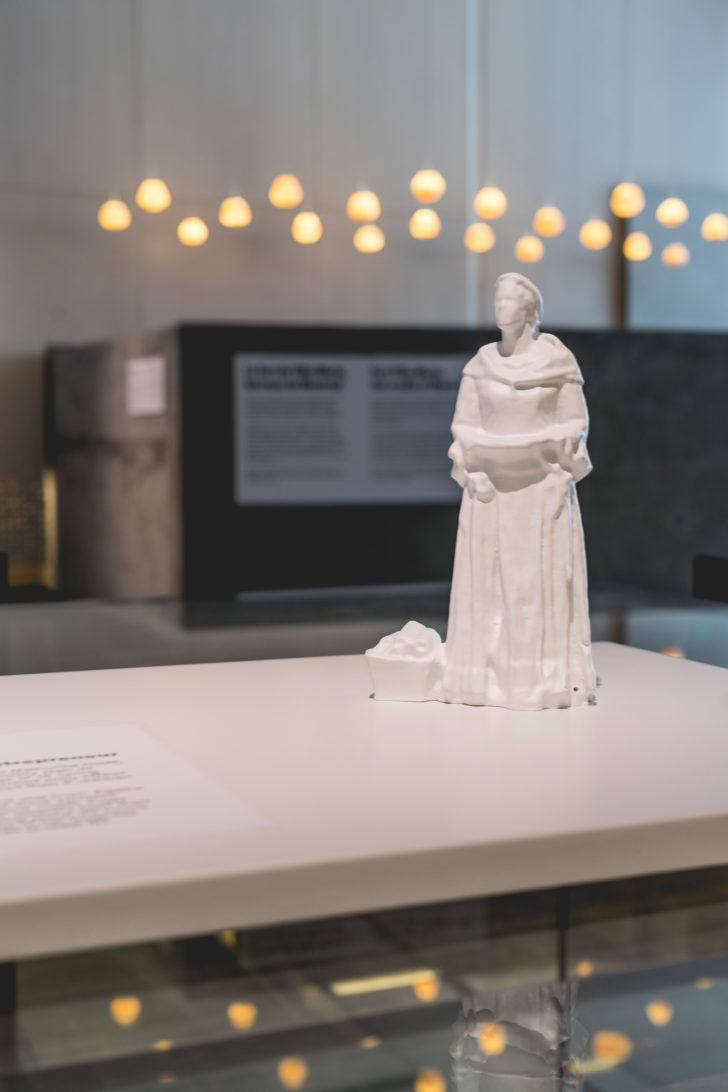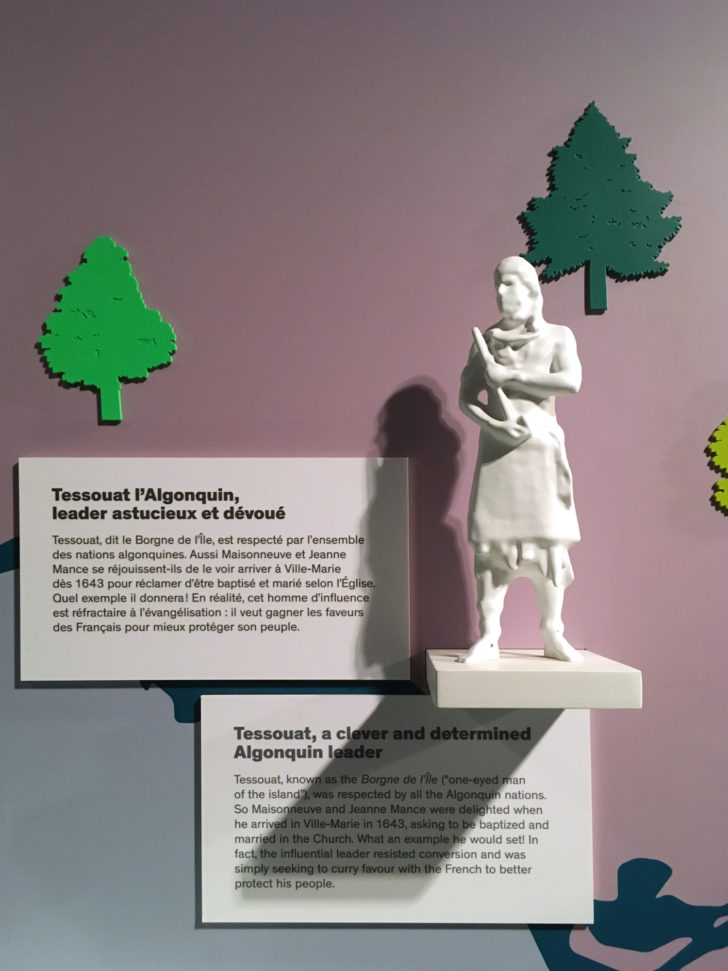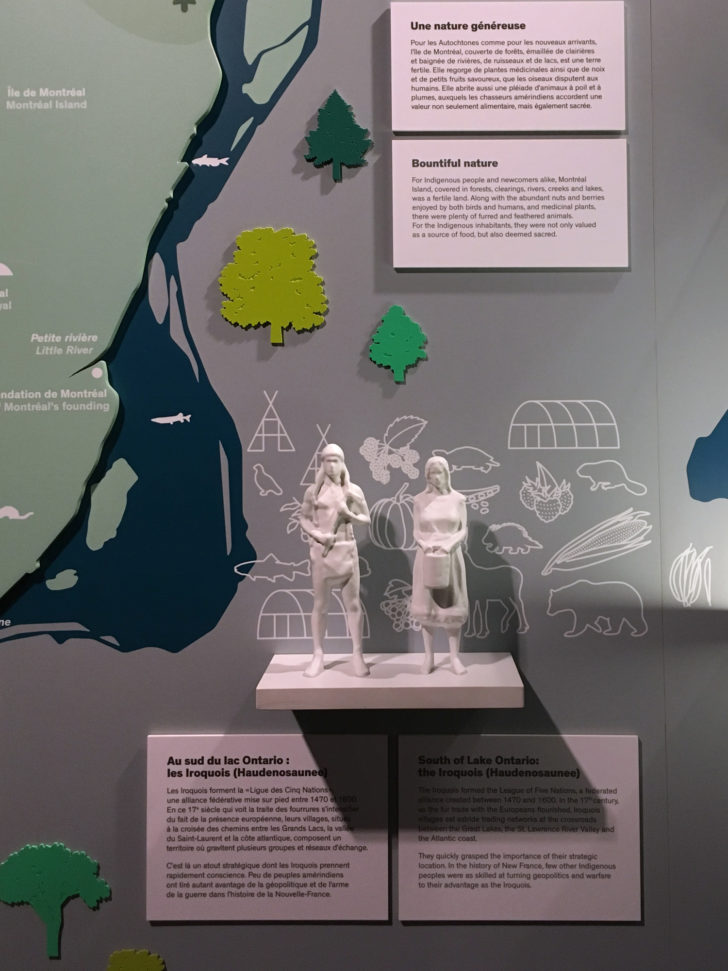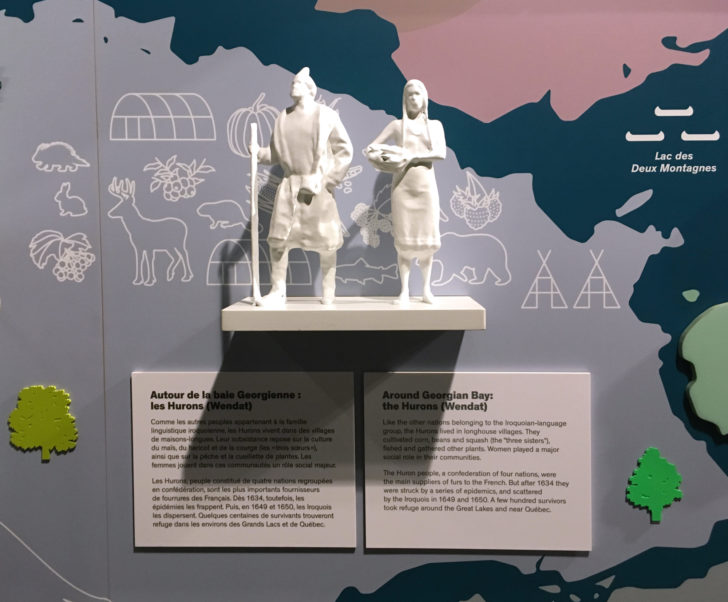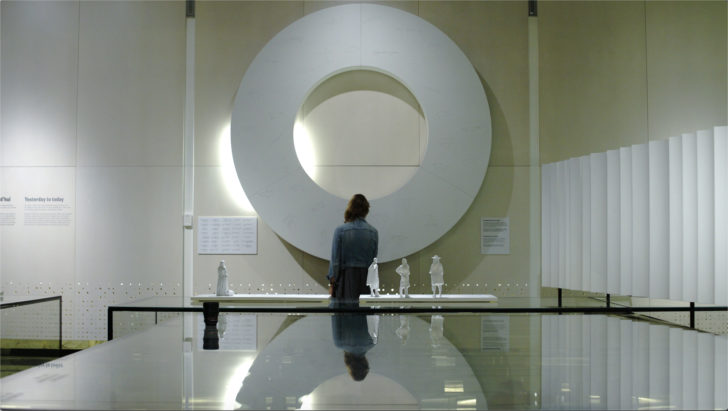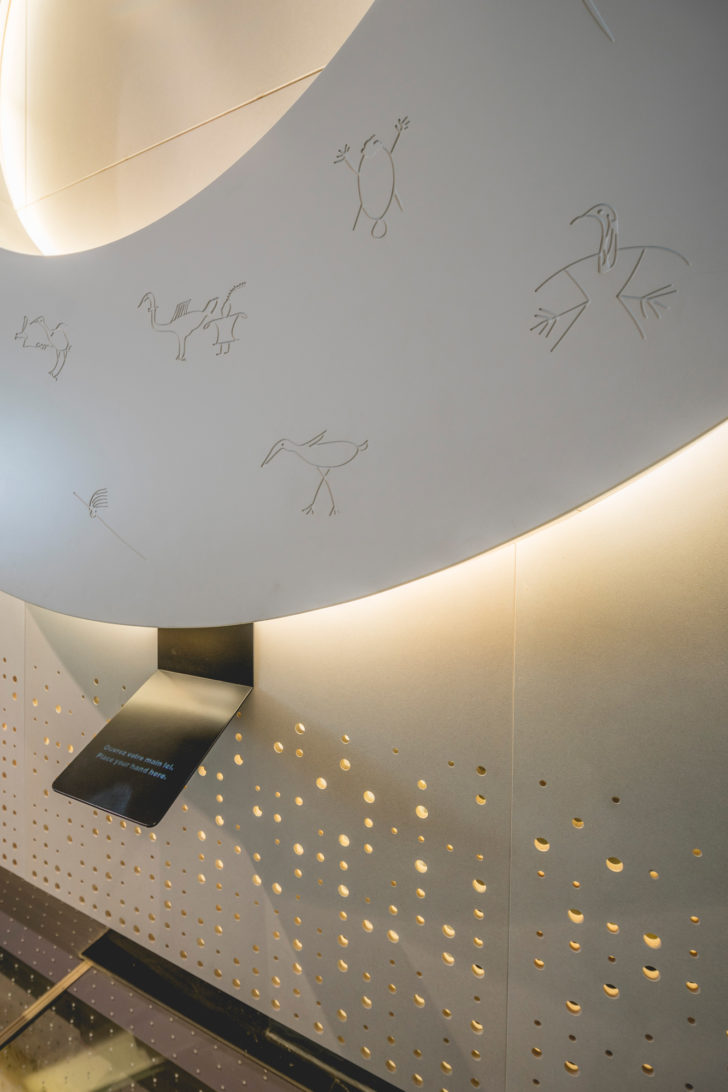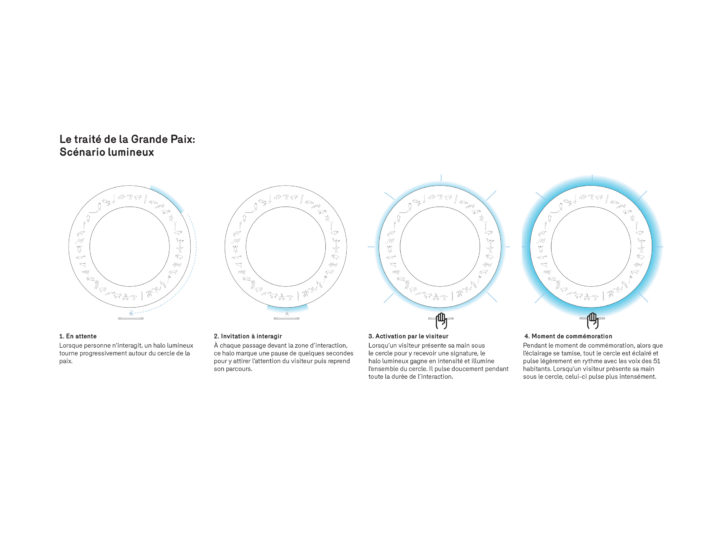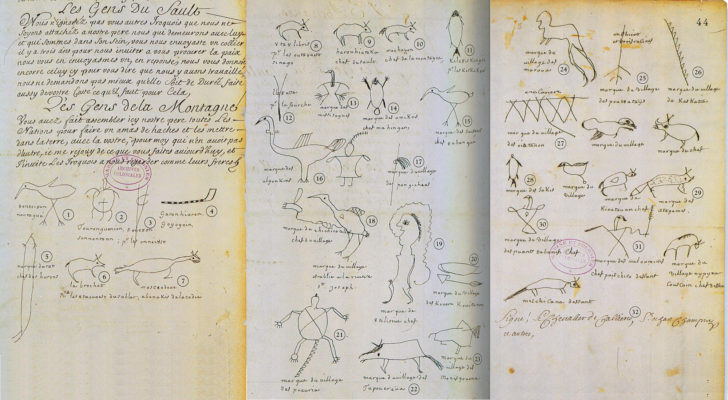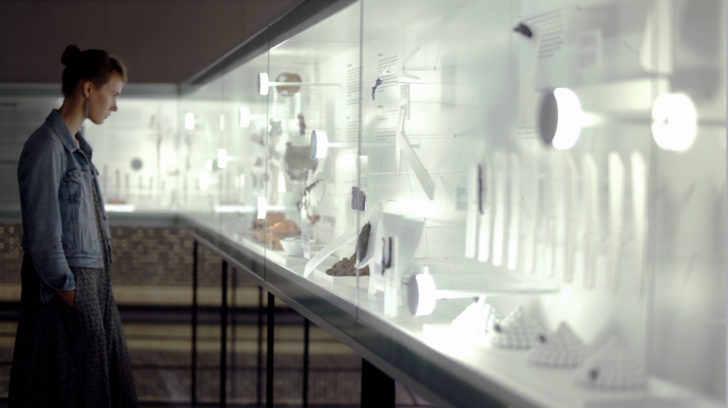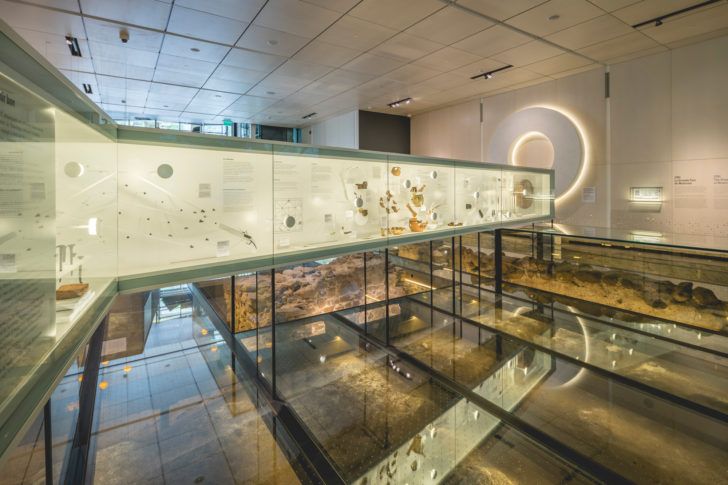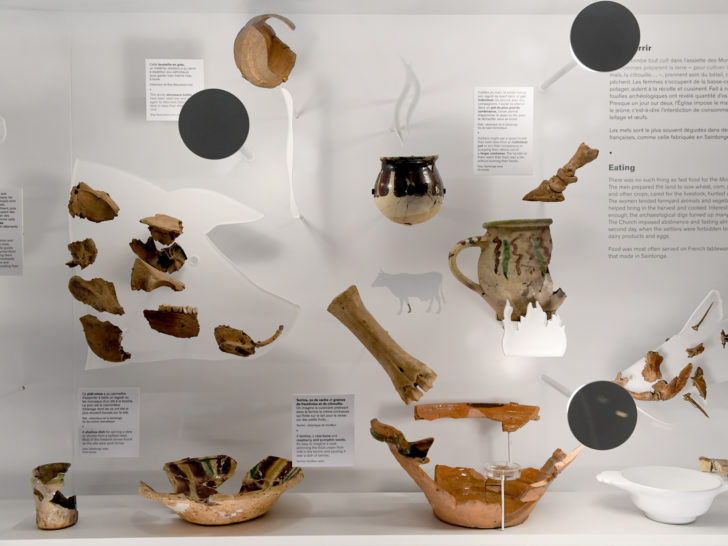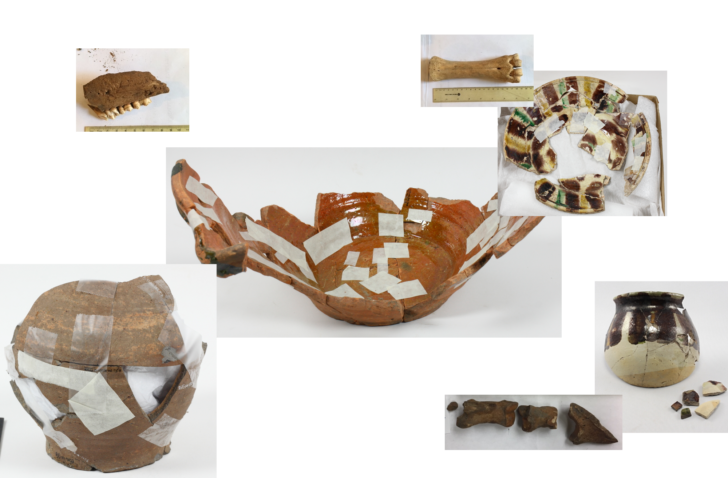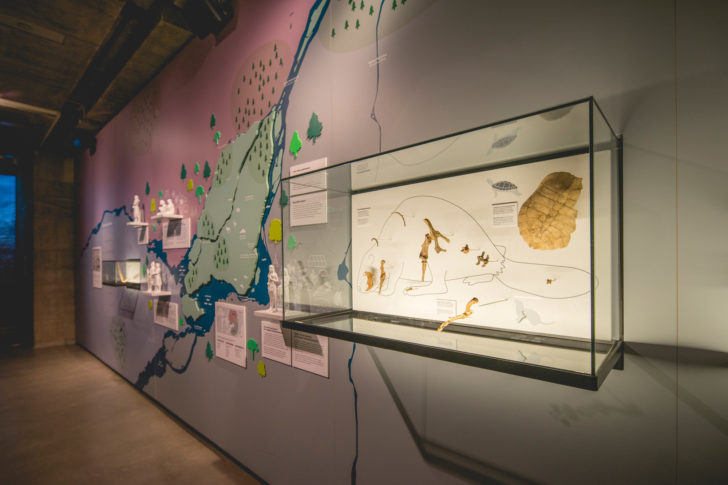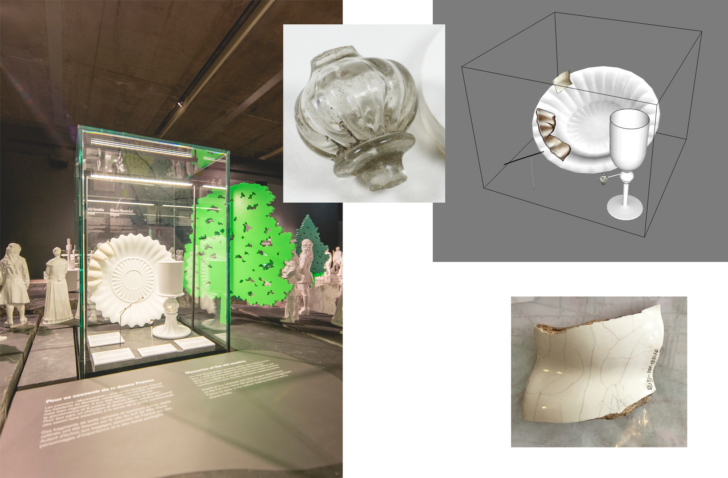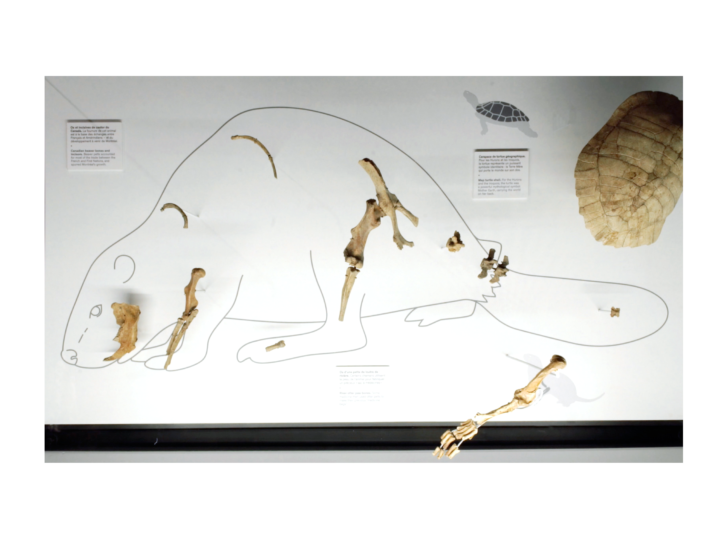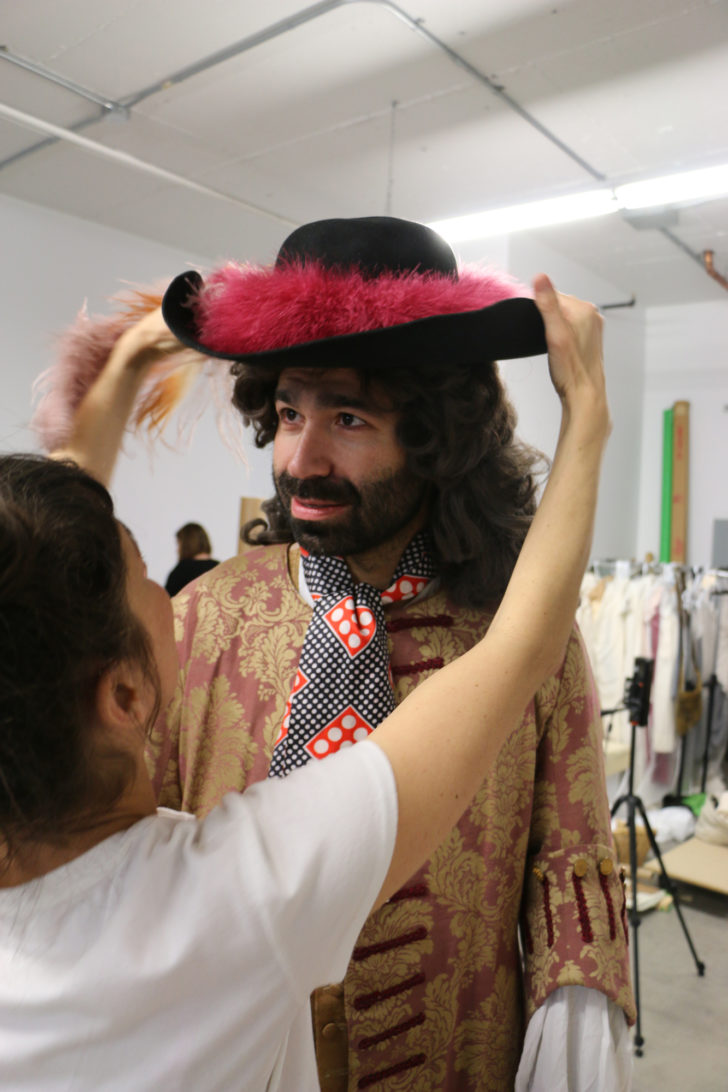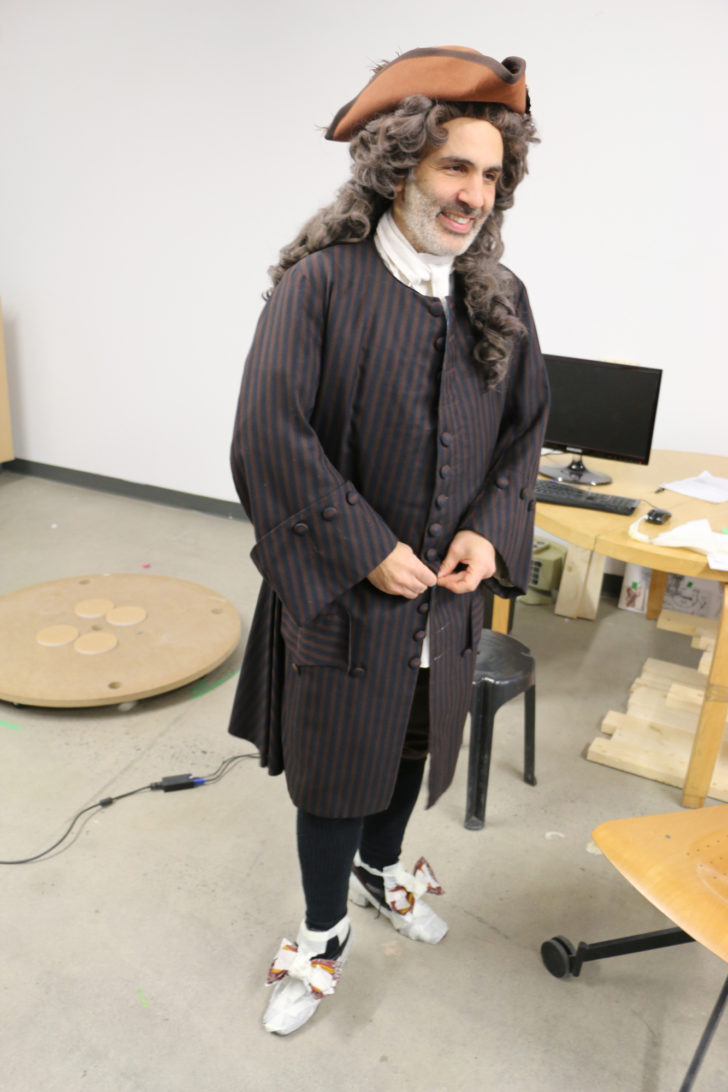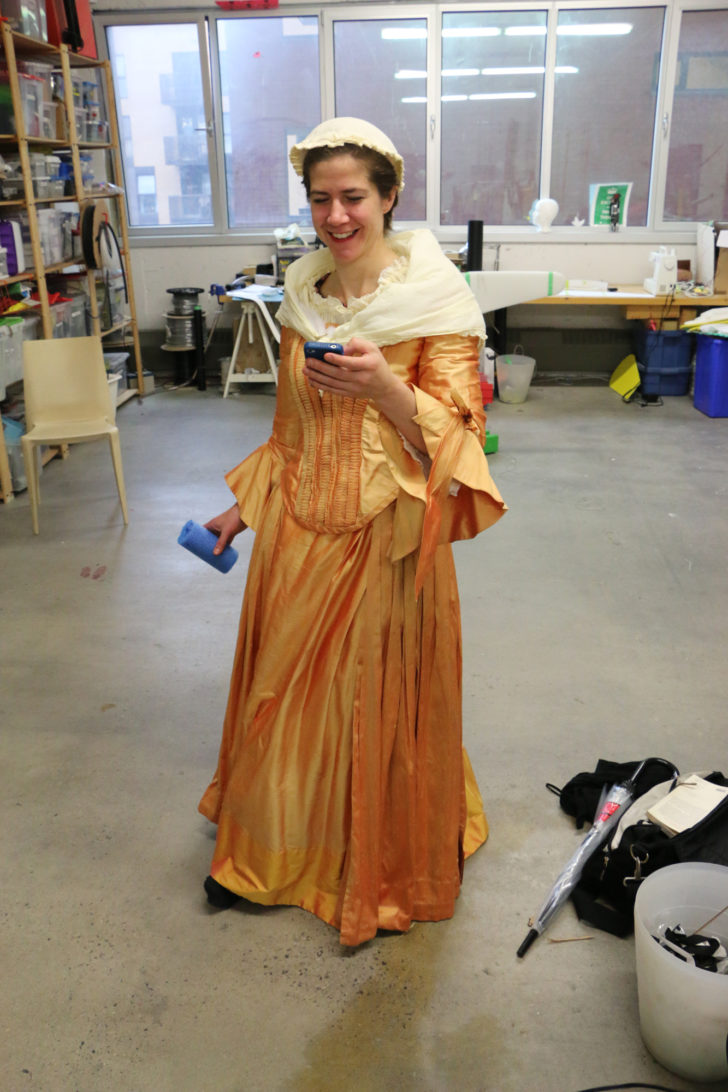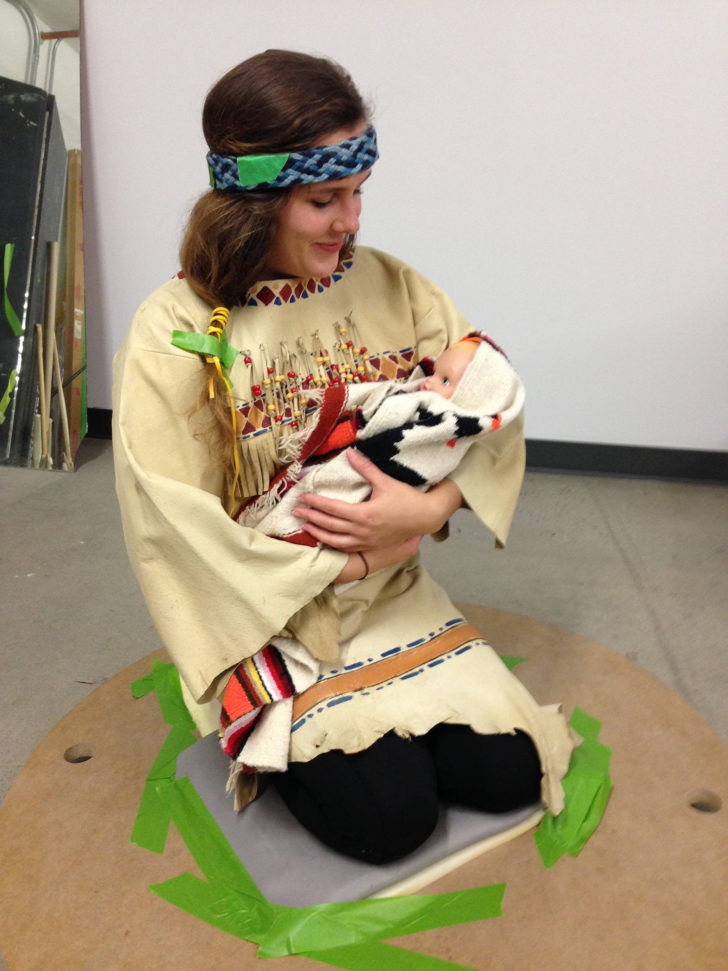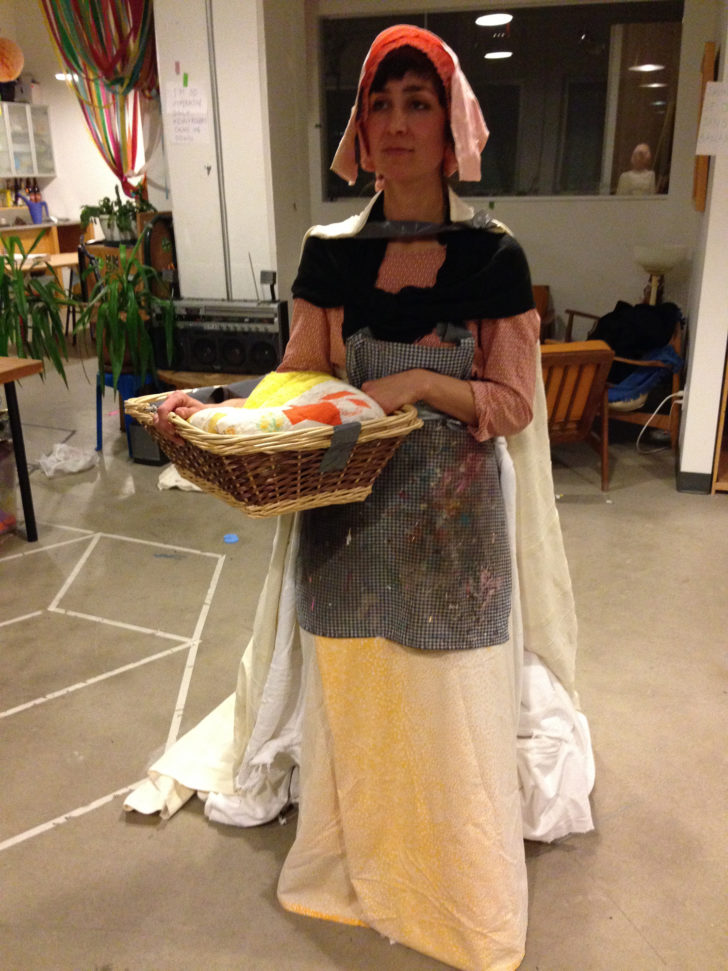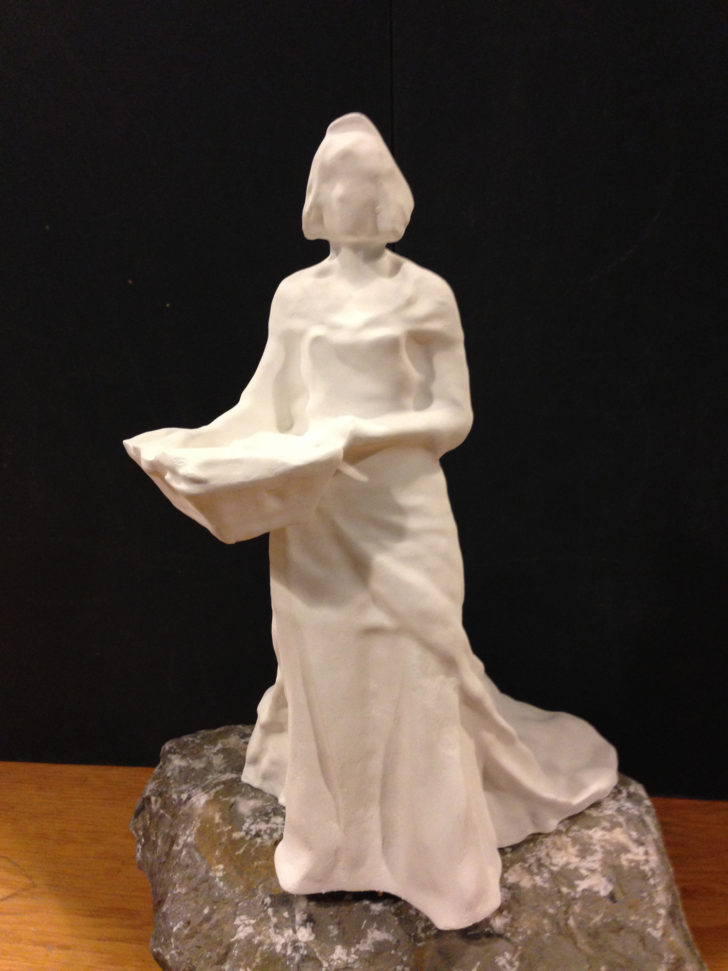Where Montreal Began
Pointe-à-Callière Cité d’archéologie et d’histoire, Montréal, CA
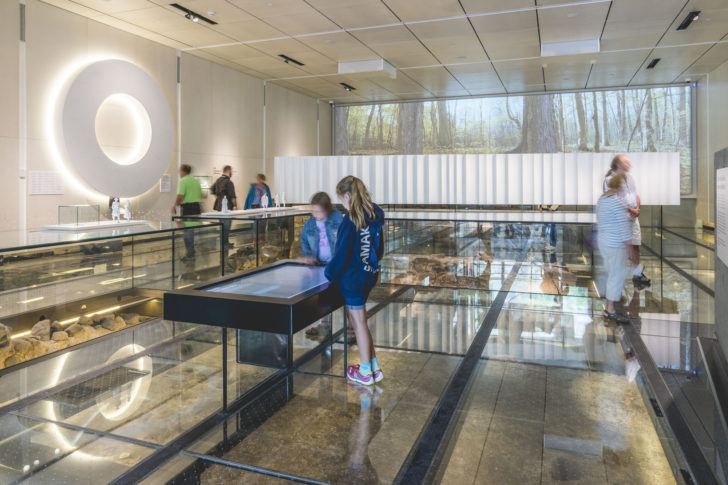
After years of meticulous excavations, the exhibition Where Montreal Began is set directly on the fragments of the city’s foundations, where the very first settlers built a fort in 1642.
On top of a glass floor looking over the actual dig site, a narrative path takes us into the engaging storyline of the birth of a city, through artefacts, film projections and interactive installations.
A Dialogue with the Spirit of the Space
How do you tell an incomplete story, one made of stones, objects and bones? As one of the few archeological sites in North America open to the public, Fort Ville-Marie’s discovery was key to understanding Montreal’s history. In order to translate its historic value to the public, the exhibition was built around a narrative path highlighting shared senses and emotions.
In the main room, a hanging wall throughout the space embodies one of the key elements of the Fort: its wooden palisade, that used to define the indoor and outdoor life of the building. Behind it, a projection by filmmaker Sophie Deraspe paints an indigenous forest similar to the natural environment at the time, while various artefacts in display cases complete the picture.
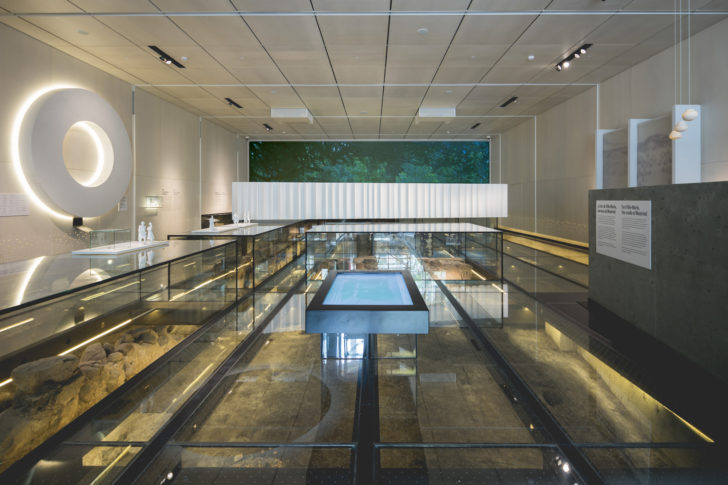
Photo by Raphaël Thibodeau
Commemorating the Sacred
One of the goals of the project was to commemorate the sacred and symbolic aspect of the place, while highlighting the men and women who lived on the land. Every 10 minutes, a sound and light celebration enliven the space, punctuating the visit with a contemplative pause.
Hanging porcelain lanterns, reminiscent of the fireflies the settlers used for light, shine as an homage to them; on the wall, we can read their names and trade. In the background, bells ring, in sync with the pulsing light. Then, as the lanterns slowly dim, the artifacts under the glass floor are illuminated, bringing the visitor’s gaze down to the stones under their feet.
Joining in History
Like ghosts of the past, white figurines are disseminated in the space to tell the founding myths of Montreal. We find key characters such as Jeanne Mance, the city’s founder, and Kondiaronk, a huron chief who played a key role in negotiating the Great Peace. All these figurines bring life to the stories told in the exhibition and contribute to a sense of belonging and pride in the city.
Welcoming Peace
In the summer of 1701, french colonists and the chiefs of the 38 First Nations signed the treaty of the Great Peace of Montreal.
A large scale white ring ―a symbol of unity―, invites the public to relive this key moment in History by reaching out, and allowing the participants signatures to dance across the palm of their hand.

Making Archeology Speak
Numerous artifacts and ecofacts were found on the site. Daily conducted a vast recomposition of these pieces with photos of similar objects, and produced 2D illustrations and 3D prints of them. While the original objects seem quotidian and unglamorous, their fragments give us insight into the resilience and ingenuity of the pioneers, and a deeper understanding of their story.
Embodying History
The figurines in the exhibition were created with a hybrid process combining traditional techniques (costume) with more contemporary methods of digital reproduction (3D scanning and printing). This approach helped us keep the flexibility needed when duplicating certain types of characters.
Awards and Recognitions
- Grand Prix du Design 2018 — Exhibition category
- Prix d’Excellence — Category 1 of the Société des musées du Québec
- NUMIX 2018 finalist in the Museum Production Category
Credits
-
- Exhibition designed for Montreal’s 375th anniversary celebrations and commissioned by Pointe-à-Callière, Montreal Archeology and History Complex
-
- A Project by Daily tous les jours
- Creative Direction
- Mouna Andraos
- Melissa Mongiat
- Production
- Antoine Clayette
- Scenography & Design
- Mélanie Crespin
- Anne Ouellette
- Rebecca Taylor
- Pierre Thirion
-
Software development
- Eva Schindling
- Michael Baker
- Object Design
- SSSVLL — Guillaume Sasseville
- Graphic Design
- Studio FEED
- Sound Design
- David Drury
- Content Direction
- Productions Métamorphoses
- Katherine Melançon
- Film Direction
- Sophie Deraspe
- Lighting
- Light Factor
- Illustrations
- Cyril Doisneau
- Props
- Nancy Belzile
- Technology Consulting
- XYZ Technologie culturelle
- 3D Modelling
- Philippe Beaudet
- Additional Software Development
- Jérémy Ferland
- Video Production
- Isabelle Couture
- Installation Supervision
- Steve Blanchette
- Production Coordination
- Anna Gazel
- Engineering
- Latéral
- Manufacturing
- Atelier Make
- Biens Communs 3D
- Concetti Design
- Créa-Pierre
- Double Effet
- Jack World
- PDI
- Photosynthèse
- Wireframe
- Artifact Installation
- Cartgo services muséologiques
- Thank you
- The entire team at Pointe-à-Callière, Atelier Laboutique, Techniverre, Les Installations graphiques Adhézion, CPA, Luminergie, Groupe Polyalto, EMG, Artbeat Studio, Construction S3M, CAFMTL, Emmanuel Grangé, Sheenan Deirdre, Jasmine Van Deventer, Fady Atallah, Nicolas Fonseca, Thibault Desmoulin, Thomas Giboudeaux, Bruno Carvalho, Quentin Liot, Louis Gazier, Mélanie Zufferey, Bea Van Grutten and Geoffrey Boulangé.
- Powered by
- Processing
- Arduino
